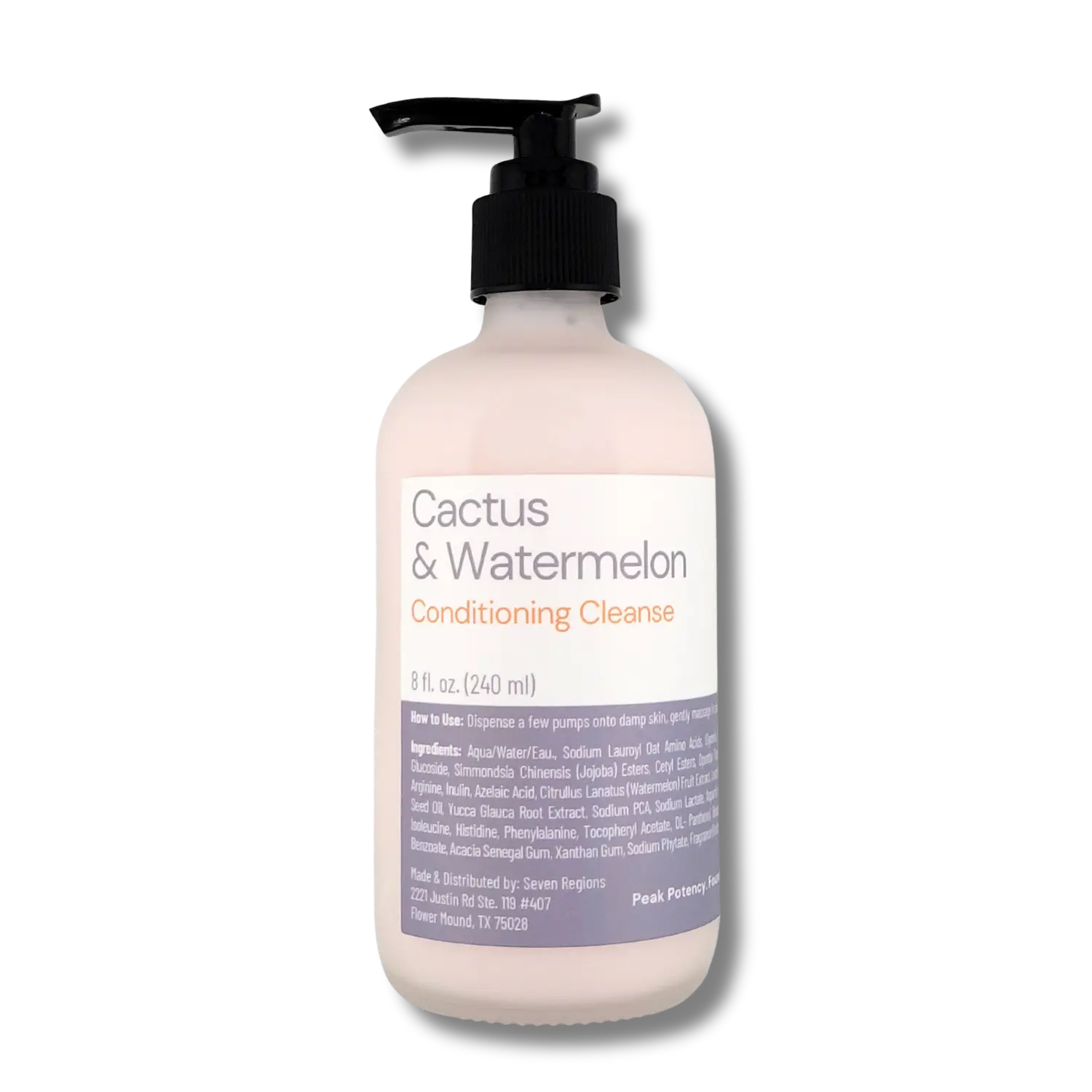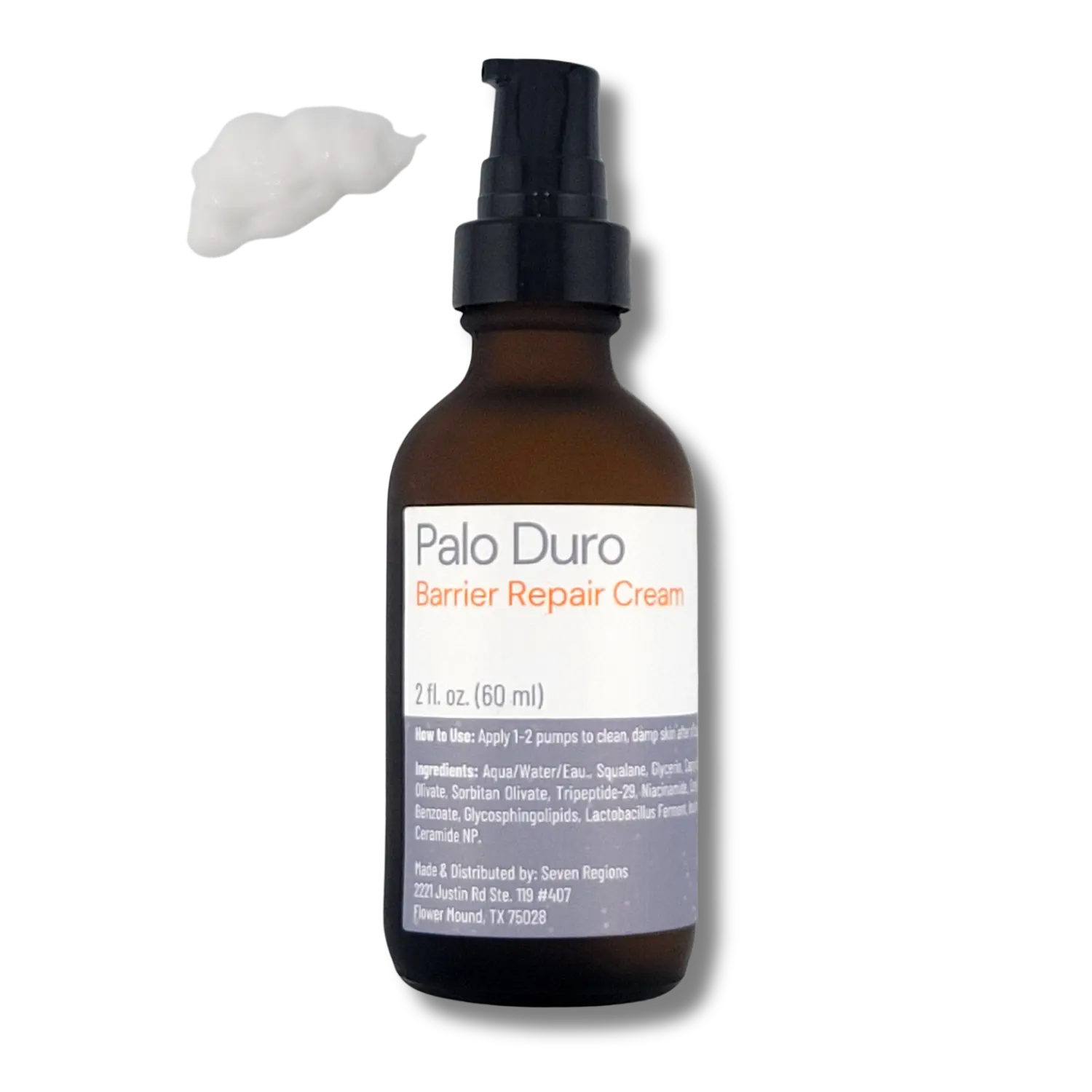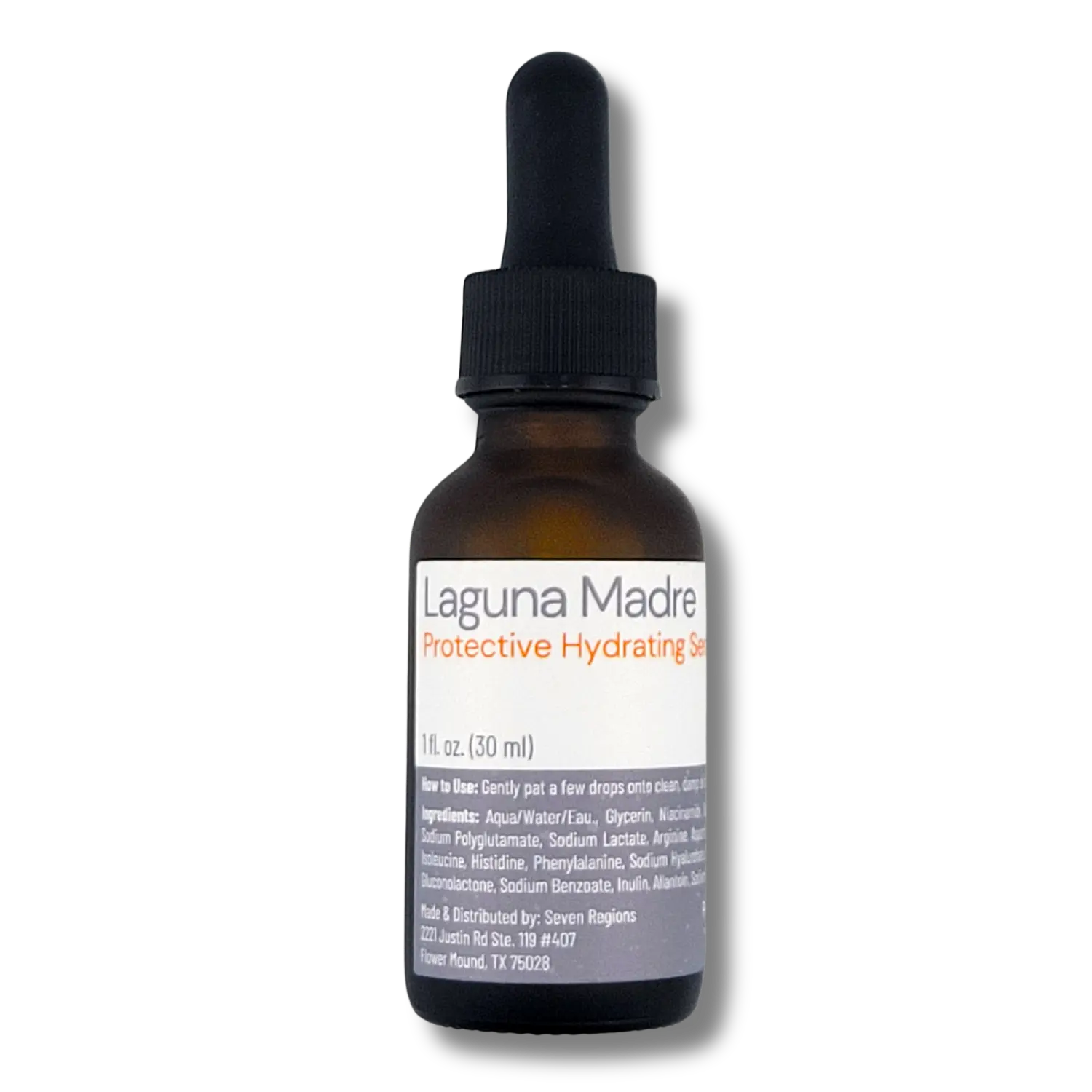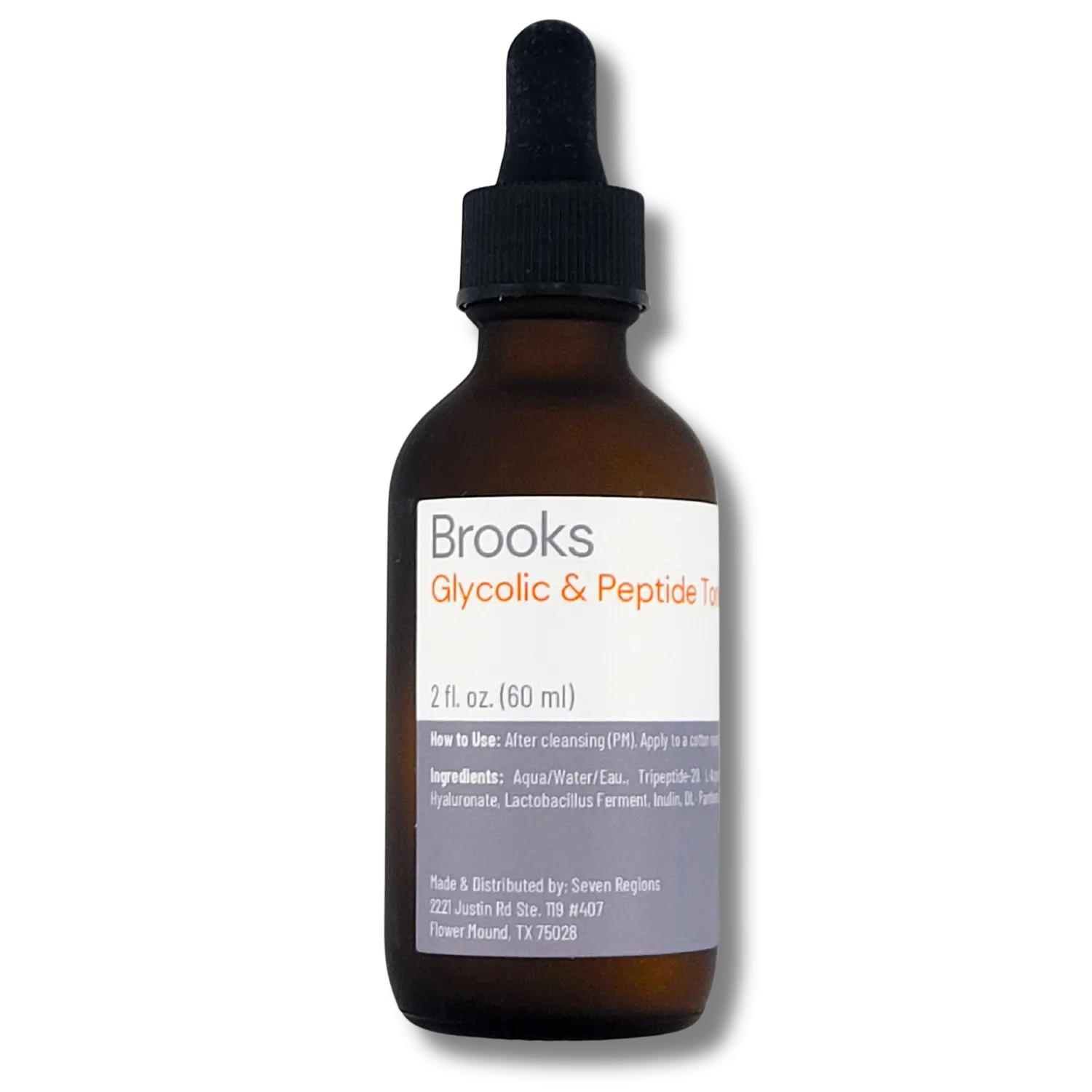You Built Your Foundation. Now What? (A Deep Dive on Skincare Actives)
From Calm to Transformed: An Intro to Actives
In my last post Stop Chasing Cures: My Guide to Building a Strong Skin Foundationwe focused on the most important step: building your skin's foundation. You've been patient. You stepped back from harsh products. You spent 2-4 weeks (or more) in the "reset" phase, focusing on calming, cleansing, and barrier-building with a product like our Palo Duro Barrier Repair Cream.
And now, your skin is calm, hydrated, and resilient.
So, now what?
Now we get to the good part: re-introducing "actives." But my goal isn't to just tell you what to buy. It's to teach you what you're buying. When you understand the science, you're no longer "chasing cures"—you're in control.
The "How & When" to Introduce New Products
Before we learn the "what," let's set the rules. You've worked hard for this new foundation; let's not tear it down.
- Rule #1: One Product at a Time. I cannot stress this enough. Choose one new product to try (e.g., a serum or a tonic). Use it for 4-6 weeks to see how your skin responds before you consider adding a second.
- Rule #2: Patch Test. Always. Apply a small amount of the new product to a discreet area (like behind your ear or on your inner arm) for 2-3 nights.
- Rule #3: Start Slow. For any new potent product, start by using it only 2-3 nights per week. Listen to your skin and slowly increase the frequency if it feels good.
A Quick, Critical Note on pH
Before we even talk about ingredients, we have to talk about pH. This is the single most important metric for a healthy foundation.

- The Scale: The pH scale runs from 0 (highly acidic) to 14 (highly alkaline), with 7 being neutral (like pure water).
- Your Skin's pH: Your skin is not neutral. It is naturally acidic. The optimal, healthy range for your skin's surface—known as the "acid mantle"—is between pH 4.7 and 5.75.
Why It Matters: This acidic "shield" is your skin's first line of defense. It's a crucial part of your foundation that:
- Keeps moisture in and irritants out.
- Inhibits bad bacteria (like the kind that causes acne) from growing.
- Activates enzymes that help your skin shed dead cells properly.
When you use a product that is too alkaline (like a harsh, "squeaky-clean" bar soap with a pH of 9), you destroy this mantle. Your barrier breaks down, you lose water (transepidermal water loss), and your skin becomes a breeding ground for irritation and breakouts.
Our "Foundation-First" philosophy means that every product we formulate is designed to respect and support this critical acidic pH. This is the secret to a resilient barrier, and it's what makes the following "actives" work their magic without irritation.
Our Philosophy: "Pro-Aging," Not "Anti-Aging"
You'll hear me use the term "pro-aging," and I want to be clear about why.
The term "anti-aging" is part of the problem. It's the language of "chasing cures." It frames a natural process as a disease to be fought. This is the exact mindset that leads to the impatience, internal conflict, and "skin-related deflation" I wrote about in my first post.
"Pro-aging" is the language of our "Foundation-First" philosophy. It's not about trying to look 25 forever; it's about health, resilience, and grace. It's about supporting your skin to be its strongest, healthiest, and most radiant at every stage of life. It's about working with your skin's natural rhythm, not fighting against it.
A Deep Dive: Your Skincare "Actives" Explained
Let's break down the main categories of ingredients you'll encounter.
Category 1: The Tone & Pigment Regulators (Brighteners)
This is the most complex category. A "multi-level" approach is key, as you need to tackle pigment from multiple pathways. An intelligent formula won't just do one thing; it will Protect from new damage (with antioxidants), Block the "pigment factory" (with Tyrosinase Inhibitors), and Regulate the "pigment transfer" to your skin cells.
This starts with Vitamin C, your "shield" against free-radical damage. The "pure" form, L-Ascorbic Acid, is notoriously unstable and irritating. The intelligent, "Foundation-First" approach is to use stable derivatives. These are "pro-vitamins" like Sodium Ascorbyl Phosphate (SAP) (which also helps with acne), Ascorbyl Glucoside, Ethyl Ascorbic Acid (an amphiphilic that penetrates deeply), and the oil-soluble superstar Tetrahexyldecyl Ascorbate (THDA). These are all far more gentle, stable, and convert in the skin to get the job done without irritation.
To support them, a formula adds "Blockers" & "Regulators" that go to the pigment's source. Alpha Arbutin is a gold-standard brightener that blocks the pigment-producing enzyme. Tranexamic Acid is a powerhouse for stubborn spots, and Niacinamide (Vitamin B3) is the ultimate multi-tasker that strengthens the barrier while also inhibiting pigment transfer. Finally, a "smart" peptide like TETRAPEPTIDE-30 is designed to specifically target and calm pigment-producing cells.
Category 2: The Cell Communicators (Pro-Aging)
These are your "pro-aging" workhorses. They work by sending signals to your skin cells, telling them to act younger.
The most famous are Peptides, which are the "building blocks" of your skin. Signal Peptides (like Palmitoyl Tripeptide-5) are "messengers" that tell your skin to produce new collagen. A special class is Copper Peptides, like Copper Tripeptide-1 (GHK-Cu) and AHK-Cu-3. These are bonded to a copper ion, which stabilizes the copper and delivers it right where it's needed for skin repair and synthesis.
The other major player is the Retinoid (Vitamin A) Family. It's crucial to understand the "conversion ladder" your skin must climb. Retinyl Esters (like Retinyl Acetate) are the mildest, "gateway" form. Retinol is the standard, more effective (and more irritating) form. Retinaldehyde is one step stronger, and Retinoic Acid (Tretinoin) is the prescription-only final form.
For a "Foundation-First" approach, we love Plant-Based Alternatives. Bakuchiol (which we use in Desert Rose oil) is a "phyto-retinoid" clinically shown to provide retinol-like results without the irritation. We also use proven actives like D'Orientine S, a trademarked ingredient from the Date Palm that boosts the skin's own defense mechanisms.
Finally, there are supporting actives like GABA (Gamma-Aminobutyric Acid). This unique amino acid acts as a powerful 'neuro-calmer' at the skin level, with remarkable soothing and anti-inflammatory properties. It's a 'Foundation-First' workhorse: it's clinically shown to support the skin's natural repair process, promote the synthesis of its own Hyaluronic Acid, and help strengthen the barrier. By calming skin stress and boosting hydration, it helps to visibly soften the appearance of fine lines.
Category 3: The Resurfacers (Exfoliants)
These ingredients work by dissolving the "glue" that holds dead skin cells to the surface.
Urea is a fantastic "Foundation-First" active. With one of the smallest molecular sizes, it penetrates effectively. But its real magic is its dual role: at low levels, it's a gold-standard hydrator, but at higher concentrations (like 10% in our Llano Renewal), it also becomes a keratolytic, gently breaking down dead skin cells. It exfoliates and hydrates at the same time.
Then you have your classic AHAs. Glycolic Acid has the smallest molecule of the AHAs, so it penetrates deeply and is highly effective, but carries a higher risk of irritation. Lactic Acid has a larger molecule, works more on the surface, and has the dual function of also being a fantastic hydrator.
But the most important concept here is Intelligent Formulation (pH & pKa). An acid's percentage (e.g., "10% Lactic") is its concentration, but its pKa (in relation to the formula's final pH) determines how much "free acid" is available to exfoliate. A lot of "free acid" is what causes that harsh, "all at once" irritation.
A smart formulator can use two techniques to avoid this. The first is "Chaperoning," where a strong acid (like Glycolic) is matched with an alkaline base (like the amino acid Arginine). This pairing "chaperones" the acid, allowing for a gradual, sustained release of its power, not a harsh slap. The second is "Dual Function." In our Serum C3, we use Lactic Acid at a high pH. Through the wonderful world of chemistry, this converts the acid into Lactate—its salt form. Lactate is not an exfoliant. It's a key part of your skin's own Natural Moisturizing Factor (NMF) and a powerful hydrator.
Category 4: The "Formula Matrix" (The Unsung Heroes)
Actives get the glory, but they don't work in a vacuum. The rest of the formula—the support system—is what makes an active work, keeps it safe, and makes it feel good.
A) The Humectant Matrix (Multi-Layer Hydration) True hydration isn't about one ingredient; it's about tackling multiple layers. An intelligent formula uses a matrix of humectants (water magnets). This includes small, foundational hydrators like Glycerin & Sodium PCA; Multi-Weight Hyaluronic Acid to hydrate both deep and on the surface; Polyglutamic Acid (PGA), which forms a breathable film that holds 4-5 times more water than HA; and Saccharide Isomerate, a "moisture magnet" that binds to your skin for 72-hour hydration. We top this off with Extremolytes like Trehalose & Ectoine, "stress-protection" molecules that form a watery shield around your skin cells to protect them from dryness and environmental stressors.
B) The Suspension & Texture (Thickeners) This is a small but critical part of an elegant formula. We use natural gelling agents like Solagum AX (a blend of Acacia Senegal Gum & Xanthan Gum) in minimal amounts. This isn't just for "feel." It creates a light, cushioned texture that suspends the actives evenly for a consistent, correct dose in every pump. This light film also has the dual function of helping reduce Transepidermal Water Loss (TEWL).
C) The Delivery System (Penetrators) These are ingredients like Butylene Glycol. Think of them as the "delivery truck." They help dissolve the active (like Vitamin C), improve the formula's texture, and carry those actives into the skin more effectively, so they can get to where they need to go.
D) The Formula Stabilizers (This is CRITICAL) This is how we ensure your product is safe and potent. Any product with water is a breeding ground for bacteria and mold, so a preservative system is non-negotiable. We avoid harsh preservatives and instead use "gentle but effective" broad-spectrum systems like Geogard Ultra (a blend of Gluconolactone & Sodium Benzoate) at the lowest effective dose. This is a perfect "dual-function" ingredient. Gluconolactone is also a PHA (Polyhydroxy Acid), a next-gen, ultra-gentle exfoliant that also acts as a humectant. So, our preservative is also hydrating and gently smoothing your skin!
Finally, Chelators (like Sodium Phytate) are the "secret" to a good formula. These "metal scavengers" find and neutralize trace metal ions that can cause a formula to spoil. This protects your antioxidants (like Vitamin C), keeping them potent, and also boosts the preservative system, so we can use even less.
The Goal: Building Your Routine Intelligently
Now that you understand pH, "pro-aging," actives, and the "formula matrix," you can look at a product label and see a strategy, not just a list.
You can also see the hidden flaw in the "10-step, single-ingredient" routine. Layering single-focused serums sounds great in theory, but it has a problem. You're not just layering actives; you're layering systems. With each product containing preservatives and chelators and thickeners of their own, you are multiplying the risk of irritation, pilling, or simply overwhelming your skin's foundation.
This is why we believe in a multi-pronged, synergistic approach.
Why layer 3-4 bottles when one intelligent formula (like our Serum C3) is designed to do it all? It combines three Vitamin C derivatives, brightening peptides like TETRAPEPTIDE-30, and hydrating Lactate, all in one stable, pH-balanced, and complete formula matrix.
Your goal isn't to become a home chemist, building a 10-step routine. Your goal is to choose one, powerful, multi-functional product from the category that matches your primary goal (e.g., a "Brightening" serum or a "Pro-Aging" serum). Introduce it slowly, supported by your foundational routine.
This is how you get all the results, with none of the disruption.





